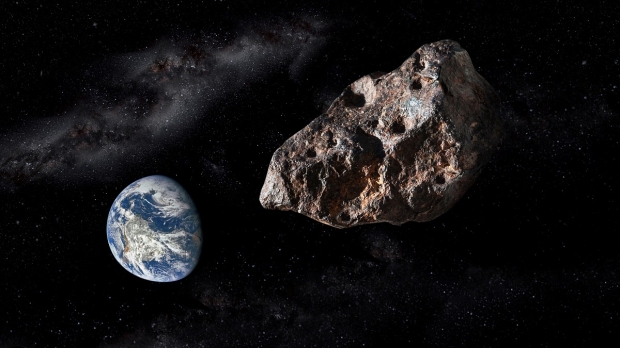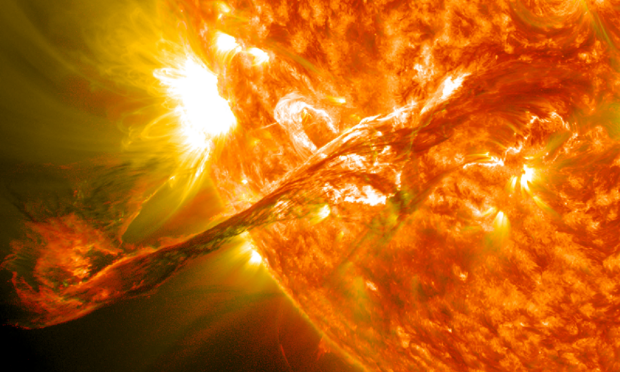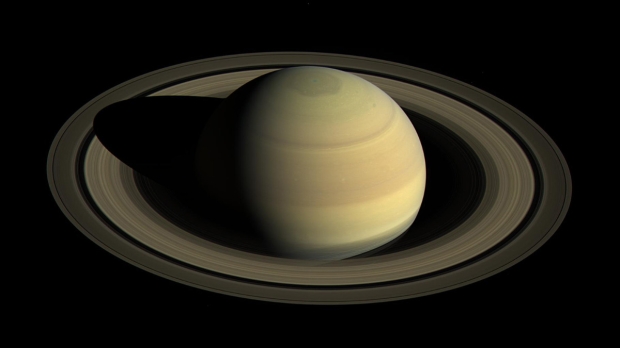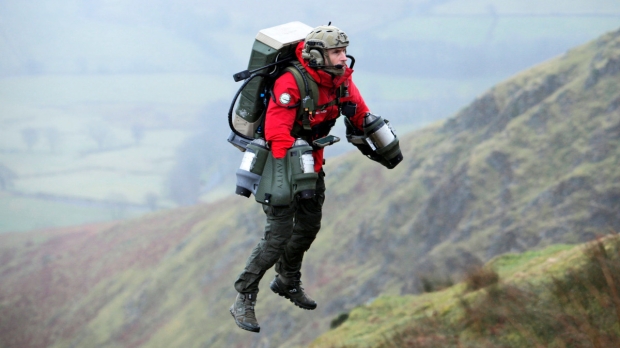Science, Space, Health & Robotics News - Page 168
NASA database confirms 600 foot-wide asteroid will approach Earth soon
NASA's database indicates that a space rock will be approaching Earth in the coming days, and it is traveling nearly 30,000 mph.
The space rock is the asteroid labeled as 2007 FF1, and according to astronomers that have been tracking the asteroid, it's estimated to be between 360 and 656 feet in diameter. On March 24, the Virtual Telescope Project snapped an image of the asteroid when it was 7.2 million miles away from Earth, and with that image, astronomers were able to confirm that 2007 FF1 was going to make its closest approach with Earth yet.
The asteroid is officially classified by NASA as "potentially hazardous" because its diameter is 500 feet or greater, and its orbit brings it within 4.6 million miles of Earth, or about 19.5 times the distance to the moon. 2007 FF1 was first discovered back in 2007, and its last closest approach with Earth was in August 2020, when it came within 10.8 million of Earth. The next time 2007 FF1 is scheduled for its closest approach is on April 2, 2037, when it will come within 927,000 miles of Earth.
Continue reading: NASA database confirms 600 foot-wide asteroid will approach Earth soon (full post)
Mysterious 'alien' creature washes up on shore, confusing onlookers
Individuals have been left shocked at the remains of a what is being described as an "alien-like" creature washing up on a beach in Australia.
Alex Tan found the remains of the unidentified creature on Maroochydore Beach, on the Sunshine Coast, located about 63 miles from Brisbane. Tan took to Instagram to post a video of the creature saying into the camera that "he has found something weird" and describing what he found as "one of those things you see when people claim they've found aliens." From the images and the video, all that can be depicted so far is that the creature features four limbs, a tail, and has a reptile-like skull.
At first, Tan thought what he found was a possum, but after a closer inspection, he ruled doesn't believe that to be the case. "It was just after we had all that stuff washed up on beaches from the floods. Its hands were really weird. I'm just calling it an alien," said Tan.
Continue reading: Mysterious 'alien' creature washes up on shore, confusing onlookers (full post)
Asteroid found hours before approaching Earth, orbit switched forever
In the solar system, there are thousands of near-Earth asteroids, and sometimes one will have a close approach with Earth.
Krisztian Sarneczky, a Hungarian astronomer at the Konkoly Observatory, managed to identify an asteroid just hours before it was due to make its closest approach with Earth during the night on March 24/25. The asteroid, now labeled as Sar2594, soared past Earth at a safe distance of about 5,400 miles from the surface, which, to put into perspective, the International Space Station's altitude is about 250 miles, and the moon is about 238,900 miles away.
During its approach with Earth, the asteroid sped past at a ridiculous speed of 40,265 miles per hour. It was estimated to have a diameter of anywhere between 6.6 to 14 feet, making it a contender for the smallest asteroid ever found, which is approximately 6 feet in diameter. Due to its close approach with Earth, Sar2594's orbit has now changed forever, as showcased by Sarneczky in the below tweet.
Continue reading: Asteroid found hours before approaching Earth, orbit switched forever (full post)
Northern lights aurora captured in pristine eye-watering 8K video
A physics undergraduate and talented astrophotographer, Vincent Ledvina, has taken a stunning 8K video of the northern lights.
Ledvina recently went on a camping adventure to Fort Yukon, Alaska, where he spent three weeks above the arctic circle capturing auroras across several clear-skied nights. The astrophotographer is currently majoring in physics at the University of North Dakota with plans on becoming a space weather forecaster.
During Ledvina's time at the Fort Yukon Long Range Radar Site, his mission was to test a theory on how pulsating or flashing auroras are created. "The design of the mission was to have the sounding rocket launch into the aurora from the city of Fairbanks on a northward trajectory while high-speed cameras captured the pulsating aurora in two locations, Venetie and Fort Yukon," Ledvina explains.
Continue reading: Northern lights aurora captured in pristine eye-watering 8K video (full post)
Sunspot explodes 17 solar flares, launching two blasts towards Earth
NASA has observed multiple solar eruptions on the surface of the Sun, which have resulted in coronal mass ejections being sent toward Earth.
The solar flares are coming from the sunspot AR2975, which has been extremely active within the past two days by releasing at least 17 solar eruptions since March 28. The flares have sent coronal mass ejections (CME) in multiple directions, with some of the charged particles due to impact Earth and cause moderate to low geomagnetic storms.
According to both NASA and the National Oceanic and Atmospheric Administration, there are at least two CMEs heading towards Earth, with there being a possibility of a third on the way as well. Reports from SpaceWeather.com indicate that the first CME is due to arrive on Thursday, March 31, and the second on Friday, April 1. As previously mentioned, officials expect that the Sun blasts will cause G2/G3 geomagnetic storms that result in an increased chance of auroras.
Continue reading: Sunspot explodes 17 solar flares, launching two blasts towards Earth (full post)
Soviet Union was developing 'cybernetic telepathy,' according to CIA
Central Intelligence Agency (CIA) documents from 1963 and 1964 have been released for a Freedom of Information Act (FOIA) request by the Government Attic website.
The request resulted in three CIA reports investigating the Soviet Union's apparent usage of extra-sensory perception (ESP) and attempts to develop "cybernetic telepathy." The reports describe conversations between a CIA agent and Soviet cybernetics researcher, and a visiting foreign exchange student.
D.A. Kerminov, the Soviet scientist, told the agent about an experiment where researchers recorded the central nervous signals of a person playing piano and broadcast those signals to another person who had never played the piano. According to Kerminov, "that person would then be enabled to play difficult music, but also would retain some of this skill as permanent learning."
Continue reading: Soviet Union was developing 'cybernetic telepathy,' according to CIA (full post)
NASA lets male astronauts stay in space longer than females, but why?
The time a NASA astronaut can spend in space is limited by their exposure to ionizing radiation over their career.
While on Earth, Earth's magnetosphere and atmosphere protect us from ionizing radiation coming from space, primarily from the Sun. The International Space Station (ISS) doesn't receive the same protection from the atmosphere but is still shielded from some ionizing radiation thanks to the magnetosphere. This means astronauts receive higher doses of radiation than those who never leave Earth, about 300 mSv per year on the ISS compared to 3.6 mSv on Earth.
Associated with the higher levels of radiation exposure are increased risks of radiation sickness and cancer. To mitigate this, NASA's current limit for radiation exposure, set in 1989, allows for a maximum of 3% lifetime excess risk of cancer mortality. Both sex and age impact this limit, creating a range of limits from as low as 180 millisieverts (mSv) of radiation for a 30-year-old woman and as high as 700 mSv for a 60-year-old man.
Continue reading: NASA lets male astronauts stay in space longer than females, but why? (full post)
Saturn is losing its iconic rings, will disappear completely
The "cosmically young" rings still have life left, but their time is finite.
We still don't know exactly how Saturn's rings formed, though they are estimated to be between 10 and 100 million years old, narrowing down the possible theories. One theory suggests that the rings could have been formed by one of Saturn's moons coming too close to the planet and being shredded apart.
With every passing year, the planetary ring is losing material due to "ring rain." The term refers to incoming micrometeorites and solar radiation, which strike the particles in the ring, electrifying them and aligning them with Saturn's magnetic field lines. This sets the particles on a course for Saturn's atmosphere, where gravity pulls them in until they are vaporized.
Continue reading: Saturn is losing its iconic rings, will disappear completely (full post)
Subnado, the world's smallest underwater scooter, is now here
Waydoo is launching its new, portable underwater scooter through a Kickstarter campaign.
Named the Subnado, it is the world's smallest and lightest portable underwater scooter, weighing only 1.4 kilograms (~3.1 pounds) and is 38 centimeters (~15 inches) in length. The cylindrical aluminum body is six centimeters (~2.3 inches) in diameter, extending to seven centimeters (~2.8 inches) wide at the propeller guard.
Its profile allows it easily fit within a backpack and comes equipped with a 98Wh lithium-ion battery that will enable it to run for up to 56 minutes on a single charge. Compared to another underwater scooter, the Sublue Tini, the Subnado is 1 kilogram (2.2 pounds) lighter and can run continuously for 11 more minutes. With its 100W PD fast charger, the Subnado takes 1.2 hours to charge.
Continue reading: Subnado, the world's smallest underwater scooter, is now here (full post)
Jet-suit equipped paramedics will be taking flight this year
The flying paramedics are from the UK-based charity, the Great North Air Ambulance Service (GNAAS).
In September 2020, the organization announced it was testing a jet-pack-equipped suit for the paramedics but had to suspend testing due to the ongoing Covid-19 pandemic. One of the members has since completed training with the jet-pack, with more members due to begin their training soon. The next stage of trials will begin this summer.
"We think the Jet Suit paramedic will speed up the response to some hard to access patients in the Lake District and allow us to reach more patients. But to know for sure, we are putting it to the test," said Andy Mawson.
Continue reading: Jet-suit equipped paramedics will be taking flight this year (full post)











